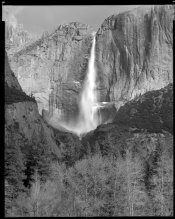copake_ham
Member
Some of the shots I always enjoy seeing here are those of "babbling brooks" where the water flowing over the rocks has a soft "silken" appearance. Even though everything else may be in sharp focus - the water flows over the rocks in a soft silk-like fashion.
How is this done? Is it by exposure settings? Or is it done in during processing?
How is this done? Is it by exposure settings? Or is it done in during processing?



 Thanks for the correction.
Thanks for the correction.
